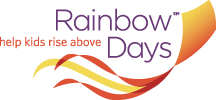It was 1968, and I was 5 years old. I have my first memory of profound sadness and rejection.
It’s 1971. I’m 8 years old. I’m in second grade. I have memories of hopelessness, overwhelming sadness, loneliness and not wanting to live any longer.
Perhaps it was the Adverse Childhood Experiences I was living with. (For more information click here.) Perhaps it was the generational depression in my family that I knew nothing about. But, I didn’t get help. It wasn’t until I was in my early 20s before I was diagnosed and began a medication regimen that helps me to this day. I’ve heard it said that instead of suffering from depression, I live with depression. That is my goal, to live and not to suffer. But it is a day-to-day battle. Honestly, some days it’s extremely hard to get out of bed. On those days when the clinical depression – the chemical imbalances in my brain – are strong even with medication and the environmental stressors of daily life are all-consuming, I struggle most.
Would I be a different adult if I’d had focused help, intervention or even acknowledgement during my childhood? I would venture to say yes. As most of us are aware, any mental health issue a child or youth faces during their developing years that is addressed at the time it is present is more likely to bounce forward from the event(s).
I’m not alone now and I wasn’t alone as a child.
One out of every five children have a diagnosable mental health need. Unfortunately, not every child who has a mental health need receives services. This could be due to not knowing what services are available; it could be because they have difficulty accessing services or because of a perceived stigma about receiving mental health care.
20% of youth ages 13-18 live with a mental health condition
50% of all lifetime cases of mental illness begin by age 14 (75% by age 24)
90% of those who die by suicide had an underlying mental illness
The stigma is real, my friends. And, it not only centers around mental health care, but merely having a mental health issue. I’ve experienced it personally. When you don’t understand or you have a cliché answer to solve an issue, I encourage you to learn more about the issue before sharing any advice. In addition, does the person want advice or are they searching for someone to listen to their story?
Is there a solution? Is there help?
I’m proud of our nation for acknowledging these needs and putting in place Mental Health Awareness tools. See what SAMHSA is doing on a national level.
Locally in Texas, this coming Saturday, April 27, is Children’s Mental Health Awareness Day in Austin. If you are near the Austin area, check it out.
This event promotes positive youth development, resiliency and recovery as well as transformation of mental health services for adolescents and their families and connects families in the community to the support resources they need. Visit our page to learn more about Children’s Mental Health Awareness Day.
What is your community doing to meet the needs of children and youth with mental health issues? If you are not directly affected by mental health issues or know someone who is, I encourage you to learn as much as you can to be ready to meet the needs of those in your community who live with mental health issues. If you live with mental health issues, I encourage you to get help if you haven’t already and learn healthy self-care techniques. Then you will be a fantastic role model for those you serve. No, it’s not that easy. Day to day is hard. But, you don’t have to go it alone. You are not alone!
To better mental health for all of us,
Kathy Daley
Training Consultant
The Trans4m Center
